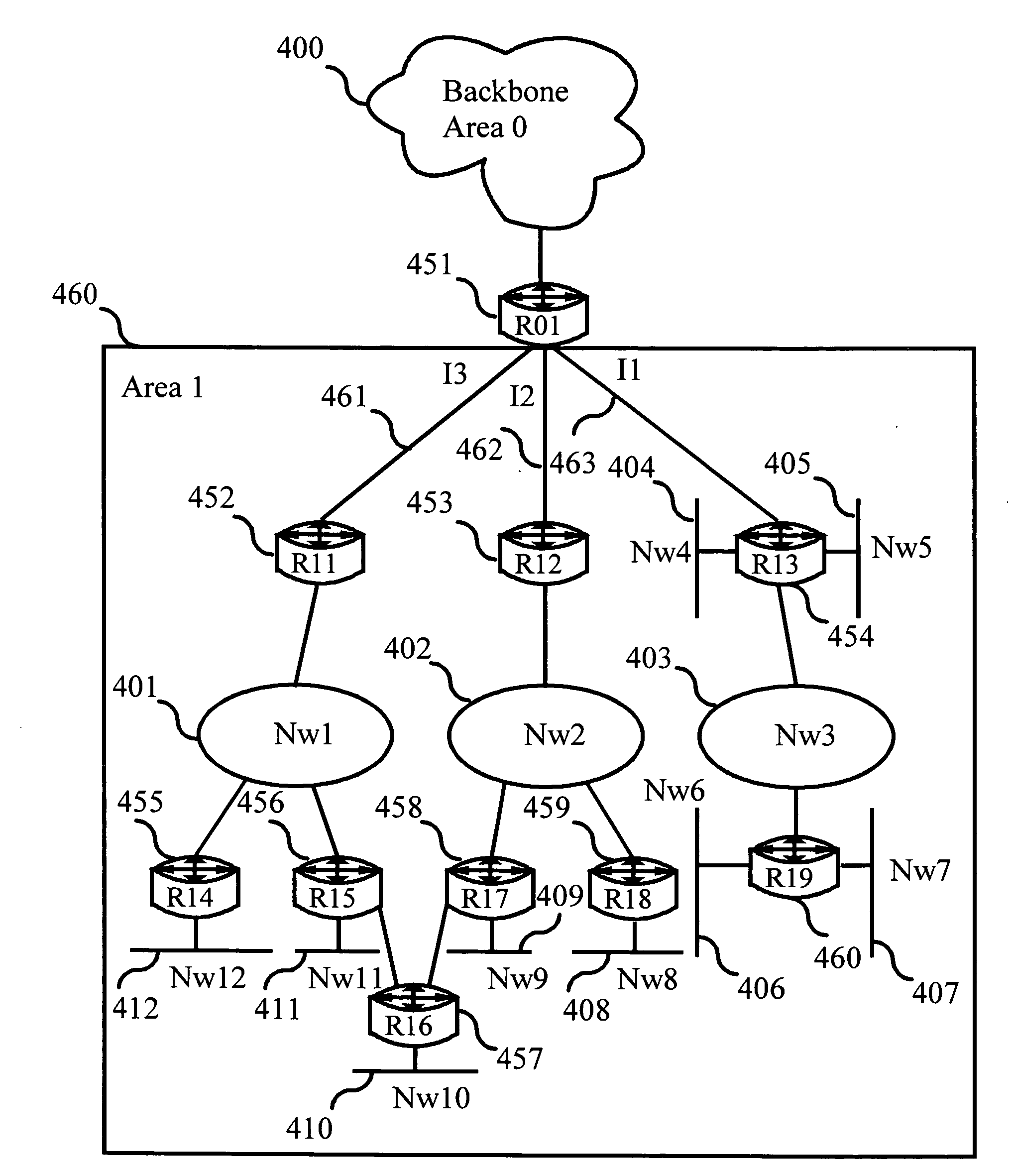Method for automatic route aggregation in a communication system
a communication system and automatic routing technology, applied in the field of automatic routing in communication systems, can solve the problems of limiting the growth of open shortest path first (ospf) routing domains, the size of routing tables is too small, and the utilization level of class b address blocks is also far from optimal, so as to improve fault tolerance, facilitate network maintenance, and increase the effect of route aggregates
- Summary
- Abstract
- Description
- Claims
- Application Information
AI Technical Summary
Benefits of technology
Problems solved by technology
Method used
Image
Examples
Embodiment Construction
[0051] Reference will now be made in detail to the embodiments of the present invention, examples of which are illustrated in the accompanying drawings.
[0052]FIG. 4A is a block diagram illustrating a communication system, which comprises an Open Shortest Path First (OSPF) stub area and the area 0, in one embodiment of the invention. The communication system is comprised in an autonomous system (not shown). In FIG. 4A there are shown only two areas, namely the OSPF backbone 400 that is always numbered as area 0, and a second area 460, the number of which is 1 in this case. There may also be other areas, but they are not shown in this particular case. There is an area border router 451, which attaches to areas 400 and 460, numbered as 0 and 1 in OSPF, respectively. Area 460 comprises point-to-point networks 461, 462 and 463 by means of which router 451 is connected to routers 452, 453 and 454. The interfaces from router 451 to area 460 via point-to-point networks 461, 462 and 463 are...
PUM
 Login to View More
Login to View More Abstract
Description
Claims
Application Information
 Login to View More
Login to View More - R&D
- Intellectual Property
- Life Sciences
- Materials
- Tech Scout
- Unparalleled Data Quality
- Higher Quality Content
- 60% Fewer Hallucinations
Browse by: Latest US Patents, China's latest patents, Technical Efficacy Thesaurus, Application Domain, Technology Topic, Popular Technical Reports.
© 2025 PatSnap. All rights reserved.Legal|Privacy policy|Modern Slavery Act Transparency Statement|Sitemap|About US| Contact US: help@patsnap.com



